In the last post, I covered Hiram Walker’s bootstrapping origins and the founding of a whisky dynasty. So what do you do when you’re the King of Canadian Whisky? You hold onto that crown with white-knuckled fingers, that’s what you do. Hiram Walker made it look easy. Remember, it’s this majestic fellow we’re talking about:
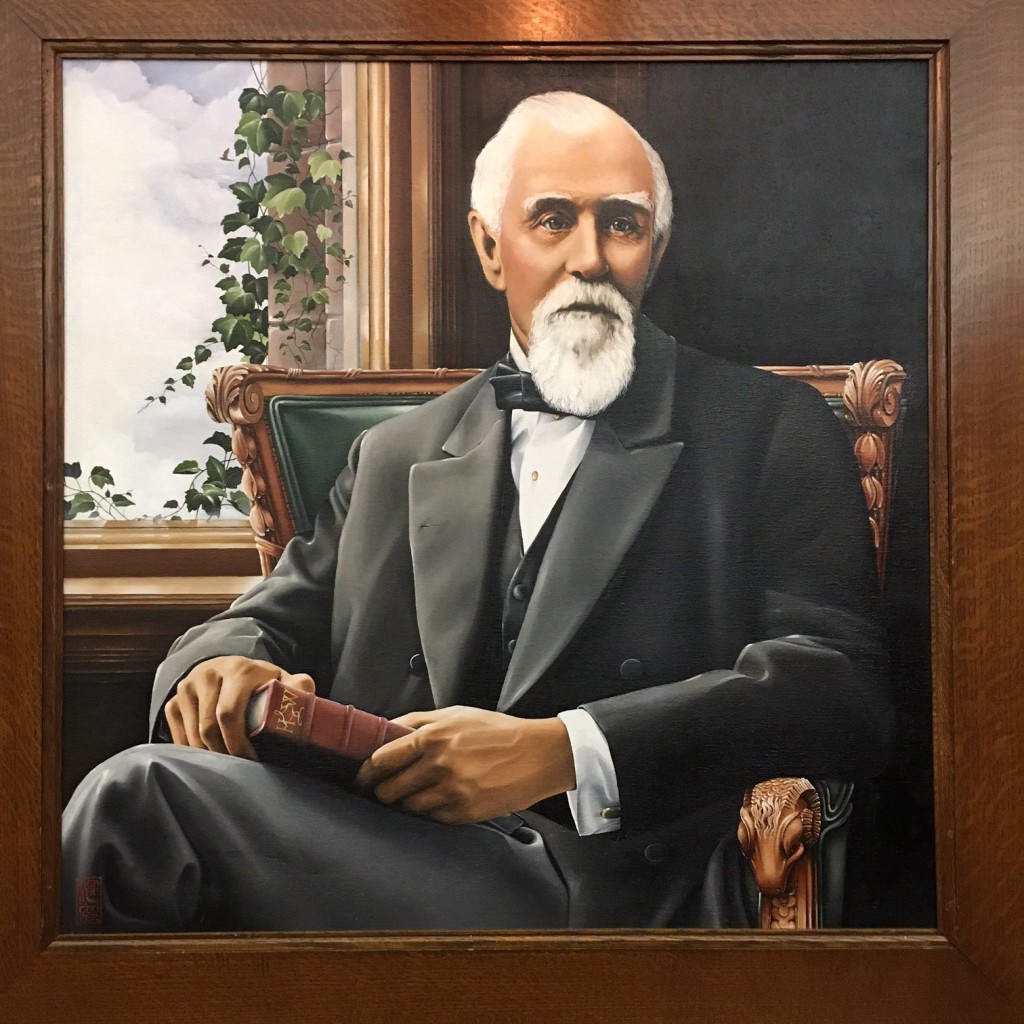
By 1880, Walker had vanquished his foes, the American distillers, by sheer force of will and some major marketing genius. His company town, Walkerville, was humming along nicely, gobbling up nearby land for use as storage, grain production, transportation and…cows.
It’s all about that vertical integration, you see. Walker had everything he needed in one tidy corner of Ontario–except, of course, his home in Detroit. Unwilling to move his growing family across the river, Walker decided to move the mountain to Mohammed. He built himself a ferry* at the foot of Joseph Campau street. In 1880, the Essex ferry had no set schedule, but by the following year that old Walker efficiency kicked in.
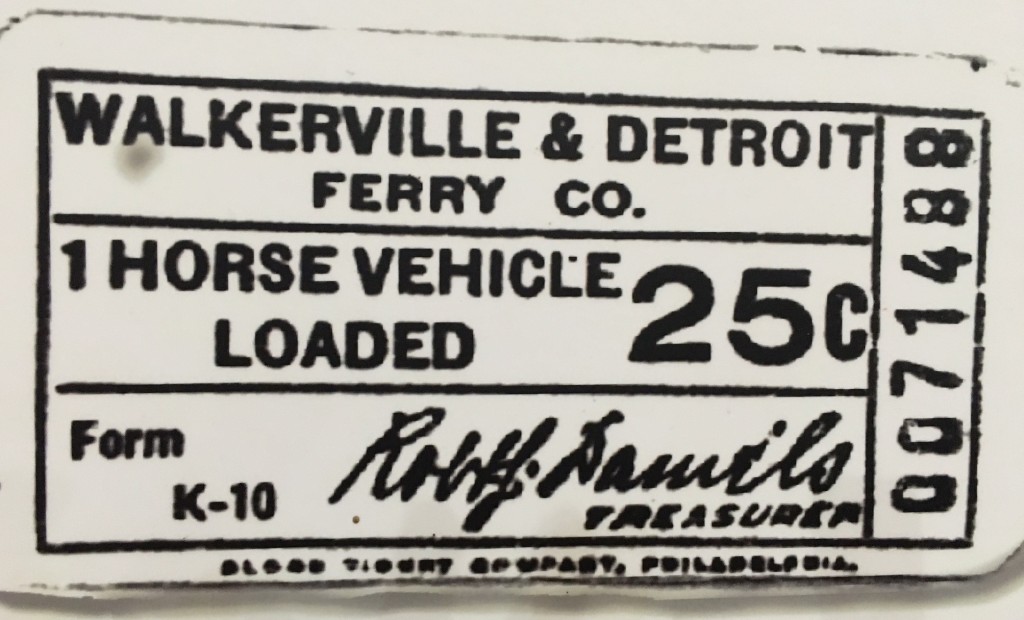
I could devote an entire post to the Walkerville Ferry, and I’m sure the Boat Nerds would love it, but we have pregnant cows and lawsuits to talk about. Here’s what you really need to know about the Walkerville Ferry: it was reliable, efficient, easy, cheap and wicked popular during Prohibition. In fact, the Free Press in 1929 rolled its figurative eyes at yet another expansion of the ferry service with the terse note that the expansion was necessary “in order to handle without delay the added thousands of cars now making the crossing.” That same article estimated 500 to 600 cars per hour were crossing from Detroit to Walkerville. More on this later, but yeah, Walkerville was pretty darned popular in the 20s.
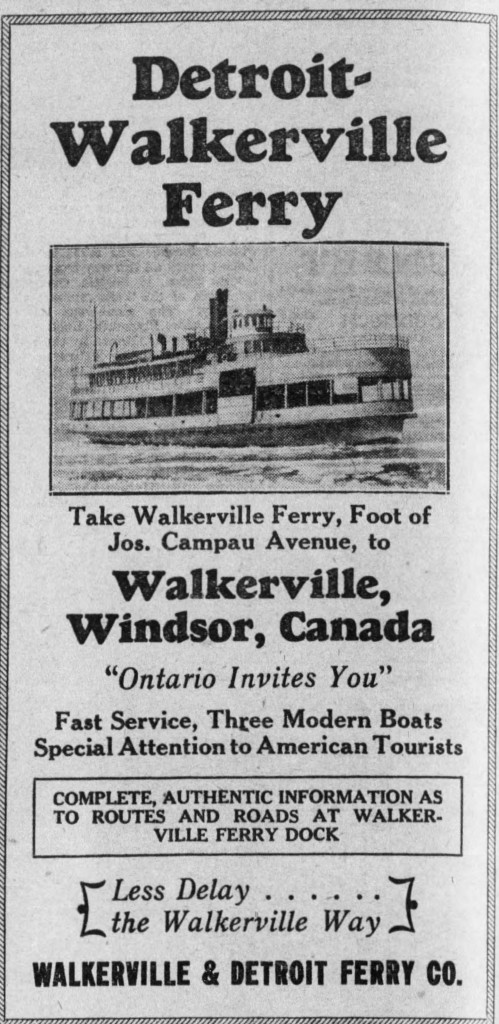
Okay, back to the 1880s. And the cow. You see, when you run a grain mill/distilling/vertical integration empire, you’re always looking for news ways to make money from existing resources. And one thing that booze production creates a lot of is spent grain. Hiram Walker, like many a distiller for untold generations before him, raised cattle, because the spent grain was a cheap and profitable way to fatten up the cows.
Enter The Rose of Aberdeen, “a beautiful creature, with a handsome figure, small limbs and dreamy eyes,” according to court reporters. Rose (as we’ll affectionately call her), was pretty but barren. Walker sold her to T.C. Sherman of Plymouth for a discounted rate. Once the money was handed over, though, Walker’s agents discovered that Rose was pregnant. Scandal! Of course, a pregnant fancy cow was obviously more valuable than a barren fancy one, so Walker wasn’t willing to let her go for a mere $80. Now he wanted somewhere in the neighborhood of $750 to $1000. Sherman, having already forked up the agreed price, was miffed. Bring on the lawyers. This Immaculate Cowception** case dragged on for the entirety of 1887, and eventually landed in the Michigan Supreme Court.
Lawyer-type people swear to me that this case is STILL taught in first year law as an example of something called “contract void by mutual mistake.” Translation: If both parties are truly mistaken in their initial estimation of an asset’s value and the property has not yet exchanged hands, then the contract is voided. So, Walker kept Rose and returned Sherman’s money, and now we all know a little bit more about Michigan contract law than we expected to.
We’re going to skip forward a couple of years because Walker’s remarkable charity in helping found some major beloved Detroit institutions deserves a separate post. Between 1887 and 1892, Walker built up his little town, bought a newspaper, and cranked out the whisky. In those years and, really, all his life, Walker wasn’t merely a cow-raising, court-arguing genius. He was also a marketing maven.
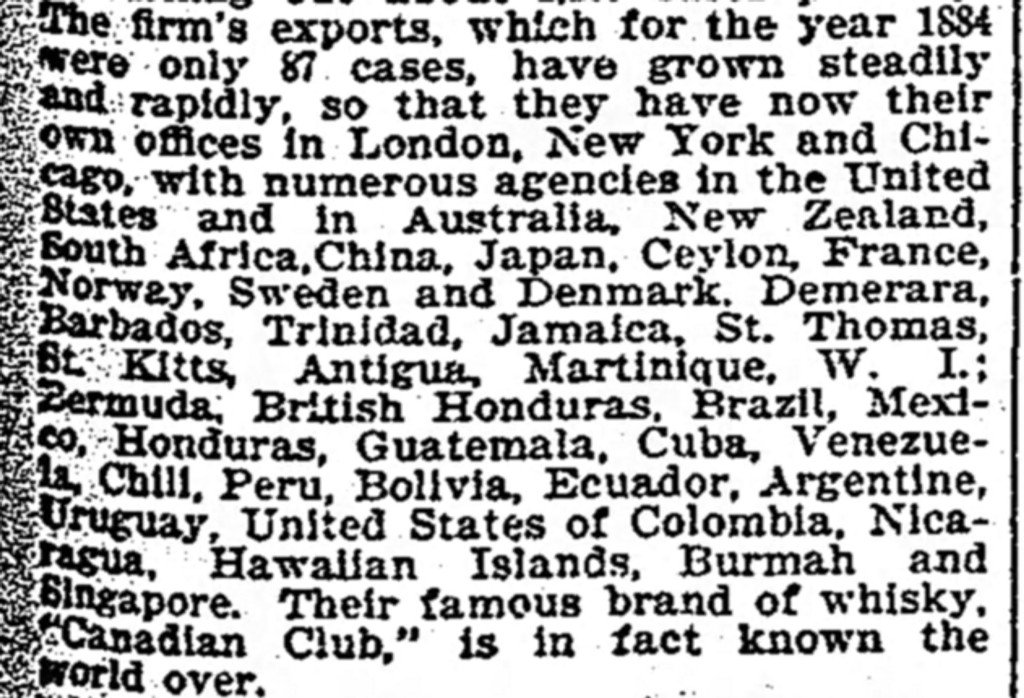
By 1893, Walker dominated the global whisky market. Eager to protect his name (and branding advantage), Walker launched a new campaign. He began calling out–very publicly, and with great fanfare–any saloon or distributor who dared to sell what he labeled “bogus liquors.” Canadian Club paid for, printed and posted massive signs outside of outlets across the US that dared to sell whiskey from questionable or even nonexistent sources.
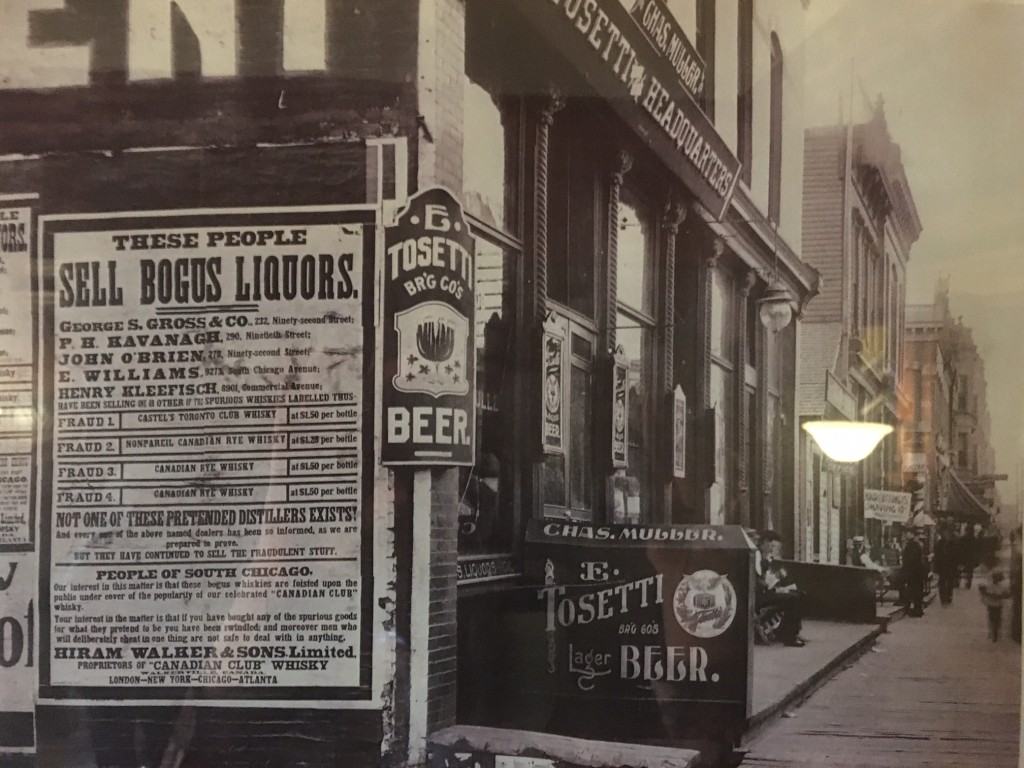
Walker had every right to do so. Again, the concept of guaranteed authenticity in whisky was rather new, and was nursed along by Walker’s efforts. By now, Canadian whisky was, in the eyes of the world, Canadian Club. So if some dishonest upstart insisted that he sold only the finest “Montreal Distilling Company” or “Toronto Club” or “Canadian Distillers Club” or any of the other nonexistent whisky brands, Walker knew. He was there. In big, bold letters in the front of that damn building. Daring you to sue him for libel.
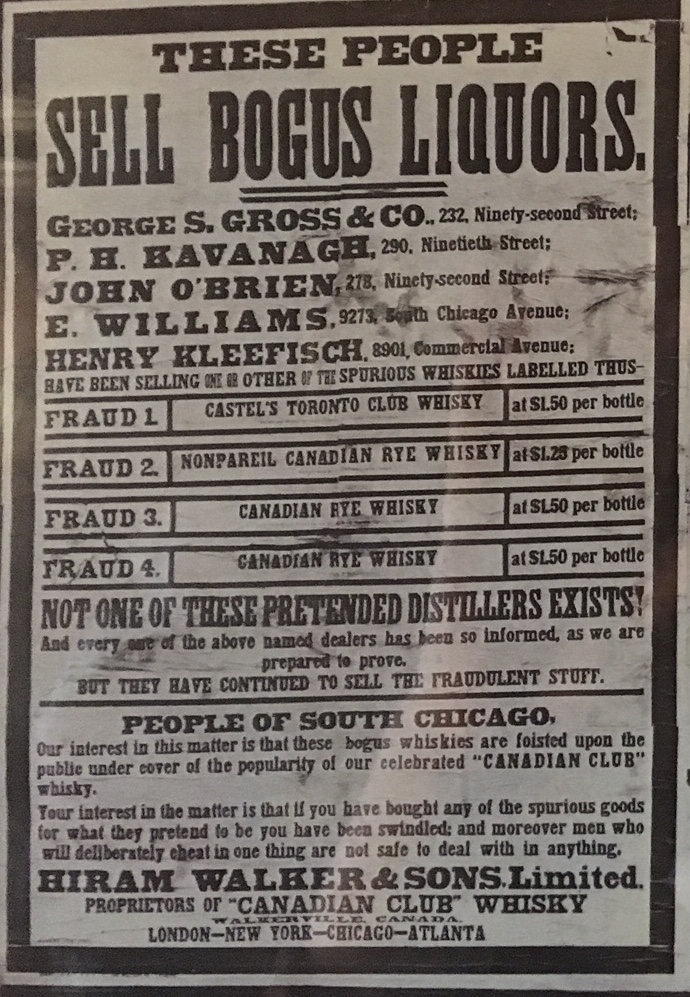
Walker’s campaign worked. Spectacularly. In fact, from the moment he started individually sealing and labeling bottles, through his Barnum-esque poster campaign, Hiram Walker crafted a brand that was based on trustworthiness.
Whisky (and whiskey) selling was a wide open market throughout the 19th century and well into the early 20th. Hiram Walker knew, far earlier than most, that name-brand would matter to consumers. He was willing to stand behind his product, and just as importantly, he had the ingenuity and the resources to promote his brand as the pioneer of reliability.
This goes a long way to explaining the massive importance of Canadian Club during the American Prohibition years. Efficiency, brand-name recognition, ease of transport…all of these factors help explain how Canadian Club dominated the global whisky export market for so many years. All it takes, really, is some savvy cow-breeding, ferry-riding, showboating and branding. No sweat.
Next post: Walker’s remarkable philanthropy, his confusingly-named descendants, and the poor beleaguered Canadian Customs agents who had to deal with all the rumrunning shenanigans of Prohibition.
*That ferry was the source of another amusing lawsuit. A homeowner on Atwater Street sued Walker in 1882, alleging that Walker had the street’s residents pay for paving and cleaning with the promise of hordes of consumers thronging to spend money on the street while waiting for the ferry. As it turned out, the paved sections were a block or two away from these dollar-waving tourists, and the landowners were understandably miffed.
**Immaculate Cowception: a phrase I just came up with, and one that I truly would never have imagined a need for in contemporary language.
Be First to Comment